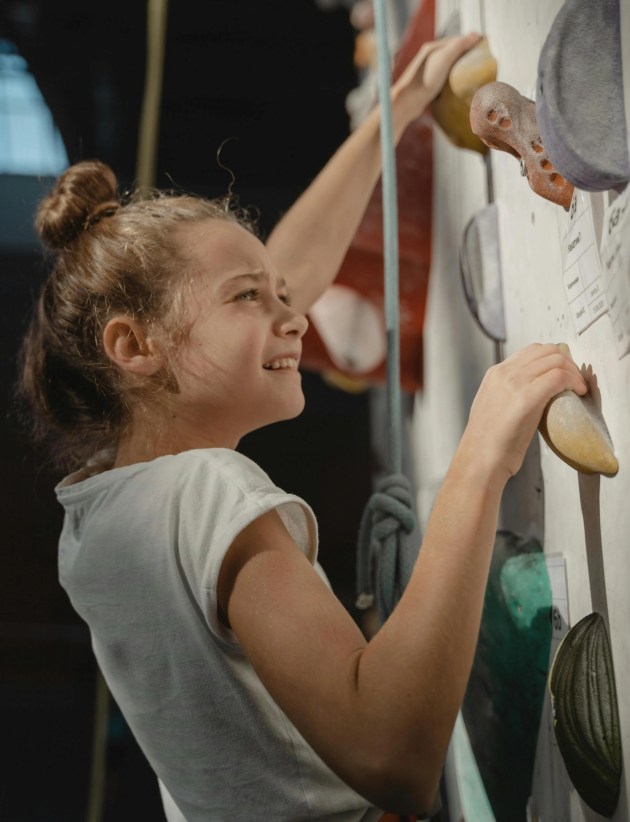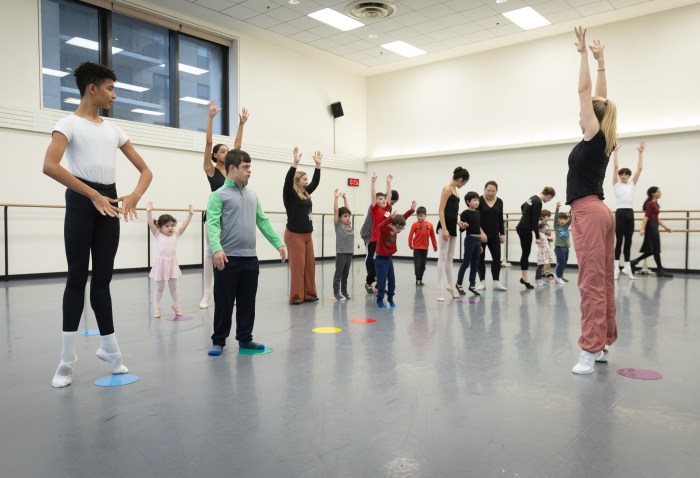
In this digital age, STEAM (science, technology, arts, and math) education is invaluable; not only does it teach children how to creatively solve problems, but hard skills such as coding are on their way to joining the “three Rs” as the pillars of childhood education. With more STEAM-focused curricula appearing in classrooms, more parents are wondering how they can support and develop their child’s STEAM education outside of school. We asked experts from extracurricular STEAM camps and programs to share the educational trends they’re seeing and tips for helping parents navigate this ever-changing world.
[Editor’s note: Click HERE for a list of great STEAM programs for kids in NYC!]
Start ‘Em Young
Children are becoming familiar with technology at a much earlier age. Kids effortlessly swipe on touch screens and easily operate apps. Scott Heifetz, founder of Launch Math & Science Centers, says that he’s seeing more parents who want to introduce their kids to computer programming at an earlier age. Coding is an important skill for children to bolster their digital fluency in the 21st Century. But many parents can be intimidated by the prospect of helping their kids learn to code, since it’s a skill that they didn’t grow up with. However, there are games and apps aplenty that can help children as young as preschool age start to develop coding skills. For example, Robot Turtles is a board game that can teach children as young as 3 basic programming skills, requiring players to put command cards into a logical sequence to help their turtles toward a gem at the center of the board. ScratchJr, an introductory programming app developed by MIT and Tufts, allows ages 5-7 to program their own stories and games.
Encourage Project-Based Learning While Letting Kids Troubleshoot & Problem-Solve
Apply the skills your child is learning in the classroom to hands-on projects. When you encourage children to “do,” it empowers them to approach new skills or challenges with confidence. Brian Cohen, the co-director of the Beam Center in Brooklyn, suggests asking kids to help solve a real-life problem. “Parents can support their kids in this kind of activity the same way my parents did,” Cohen says. “Engage them in genuine projects. Instead of directing them to a website or tablet, fix the bike or the plumbing or the lamp together. Take them to work. Connect them to other adults who do interesting things and don’t mind having a kid tag along or lend a hand. You don’t need an app to support your child’s sense of invention and innovation.”
Naima McQueen, project manager of onsite programs at RoboFun, recommends keeping kids engaged in STEAM education by figuring out what they’re interested in and helping tailor projects accordingly. “A kid who doesn’t want to make a video game might change their tune if they realize they can make the game about their favorite animal,” she says.[gravityform id=”13″ title=”false” description=”false” ajax=”true”]
Teach Kids That Failure Is Their Friend
We learn the most when we make mistakes—in any field. According to Eli Kariv, co-founder of the Coding Space, many of the skills required for a STEAM activity like coding are interdisciplinary. “These skills can be learned through any subject,” Kariv says. “The computer science education community has had a real focus on not just teaching kids how to code, but how to think. Encourage them to try new things, explore new fields, to confidently step forward and know that failing or being ‘bad’ at something is the first step towards becoming an expert.”
Marc and Tammy Goldberg, owners of Mathnasium of Manhattan, echo Kariv’s sentiments. “Children need to feel that it’s acceptable and valuable to make mistakes. Always talk about mistakes as opportunities for learning. Reinforce that making mistakes is a requirement to becoming great at math, and really anything else in life,” the Goldbergs wrote in an email.
They also emphasize the importance of maintaining a positive learning environment by examining your own relationship with STEAM subjects, like math. “Make sure the vibe around math is always positive at home, particularly around how you feel about your own math abilities,” they advise. “If you have negative feelings about math, avoid allowing that negativity to come through in conversations with your children.”
Make It Fun
“We believe [that] using an approach which balances kids’ interest in having fun with a rigorous approach to learning is a win-win for kids and parents alike,” says Charu Chaturvedi, the co-founder of CodeAdvantage. According to Chaturvedi, kids are excited to create and appreciate game-based learning platforms. “In this way, kids are immediately engaged, excited to learn, and receive more immediate gratification by seeing and playing with their own game creation,” Chaturvedi says.
Game-based learning platforms are becoming quite popular both in and out of the classroom—just look to the surging use of Minecraft, in which players can build whole worlds using textured blocks, as an educational tool.

According to Camilla Gazal and Flavia Nauslasky, owners of Zaniac Learning’s Upper East Side location: “Many kids already have an engrained love and passion for the game, which brings in elements of fun, peer-based problem solving that is key to building confidence and retaining information.”
Make Connections Between Classroom Lessons & Real-World Experiences
“The first step to fostering STEAM studies at home is connecting the theory of science or technology concepts learned at school…to the real-world practice of everyday life,” Zaniac’s Gazal and Nauslasky explained in an email. “Whether that is discussing the underlying science around cooking a meal (thermodynamics, chemical reactions) in simple terms with your kids, or making observations about the physical interactions between objects as a primer to Newton’s Laws, capitalizing on opportunities to draw connections between the classroom and real-world is key.” Paul Kogan, founder of CodeCraft Academy, frames programming as not just at technical skill, “but as a way to learn the kind of thinking appropriate for the 21st century, and an information-driven society.” For example, he adds: “Decomposition—a key CS concept—[teaches] kids to break problems down into their component parts and solve them one by one.”
Know Your Resources
In addition to the many extracurricular STEAM-focused classes and camps available in the city, there is a bounty of online resources and tools to supplement your child’s STEAM education.
“While there’s no substitute for an amazing teacher, sites like Scratch.mit.edu, Tynker, [and] Khan Academy, can provide great resources for your child to start or continue their learning at home,” says Kariv of the Coding Space.
“At Launch, we employ an institutional grade software package known as FASTT Math (from Houghton Mifflin Harcourt) that uses adaptive technology to provide a unique experience for each student,” says Heifetz of Launch Math & Science Centers. “In the home, parents can use old-fashioned flashcards, or they can use one of the many online fact practice programs available—just type ‘online math flashcards’ into Google, for example.”
McQueen of RoboFun recommends MIT Media Lab’s Scratch software, which is free online. “Hour of Code and Code Academy also have great websites and free resources for people of all ages who are looking to learn more about coding,” she says.
Learn Alongside Your Child
Share the educational experience with your children. Chaturvedi of CodeAdvantage suggests: “Allowing a child to ‘teach’ a parent about something they are learning is an excellent way to reinforce it and create a tremendous sense of pride and ownership in the child.” Noah Berg, the director of communications at Pixel Academy, echoes Chaturvedi’s sentiments. “There’s no better way for a parent to support his or her child’s digital learning than to learn and help themselves,” he says. “There are fantastic tutorials for adults of all ability levels on sites such as Lynda, Pluralsight, and even YouTube (though you have to be a bit more picky). If you’re looking for something more hands-on at home, electronics such as littleBits or controllers like Arduino are great hardware with endless online inspiration.” Kogan of CodeCraft Academy adds: “I think parents should not be afraid to spend time in their kid’s worlds, even down to the level of playing their games—such as Minecraft—with them, asking them questions (what do I need to do to build a house?) understanding how that world works.”




















